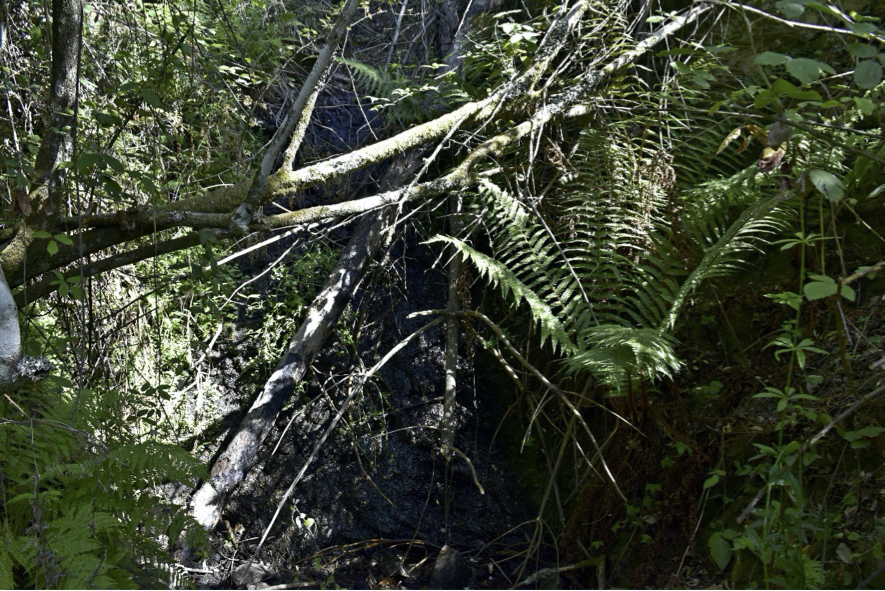Evaluation of the state of conservation of Dryopteris affinis (Lowe) Fraser-Jenk. (Dryopteridaceae) in the Genal Valley
Keywords:
Conservation Biology, habitat destruction, threatened species, population, ferns, AndalusiaAbstract
Dryopteris affinis is a threatened fern in Andalusia, classified as Vulnerable. It is known to be present in five areas in the region, but the Genal Valley is the only one that is neither a National Park nor a Natural Park. Recent years have seen a decline in the number of individuals and loss of sites, mainly due to habitat destruction: from pressure from game species and forestry activity to the construction of pools for amphibians. Before conducting this study, only three adult individuals had been recorded across the entire valley. By surveying the known localities and exploring the most favorable areas, a total of 139 individuals were found: 110 juveniles and 29 adults. All individuals were concentrated in a single 10 x 10 km UTM grid square, and mainly along a small stream, the site at which 53% of all the individuals and 72% of the adults were found. Further, they were rather thinly spread (area of occupancy less than 4% of their potential area) and the breeding individuals were at an advanced age (36% at the maximum developmental stage). These findings demonstrate that the species is highly sensitive to habitat disturbance, and small-scale works, like the construction of pools for amphibians, cause significant damage to the population of Dryopteris affinis in the Genal Valley.
Downloads
Metrics
References
Bujnoch, W. (2015). Contribution to the phylogeny of Dryopteris remota by genotyping of a fragment of the nuclear PgiC gene. Fern Gaz., 20(2), 79-89.
Cabezudo, B., Talavera, S., Blanca, G., Salazar, C., Cueto, M., Valdés, B., Hernández-Bermejo, J. E., Herrera, C. M., Rodríguez Hiraldo, C. & Navas, D. (2005). Lista roja de la flora vascular de Andalucía. Sevilla: Junta de Andalucía, Consejería de Medio Ambiente.
Delgado Vázquez, A. J. & Plaza Arregui, L. (2006). Helechos amenazados de Andalucía. Sevilla: Junta de Andalucía, Consejería de Medio Ambiente.
Fahrig, L. (2003). Effects of habitat fragmentation on biodiversity. Annual Review of Ecology, Evolution and Systematics, 34, 487–515.
Fraser-Jenkins, C. R. (1982). Dryopteris in Spain, Portugal and Macaronesia. Boletim Da Sociedade Broteriana (II Sér.), 55, 175-336.
Fraser-Jenkins, C. R. (2007). The species and subspecies in the Dryopteris affinis group. Fern Gaz., 18(1), 1-26.
Freigang, J., Zenner, G., Bujnoch, W., Jessen, S., & Magauer, M. (2017). Dryopteris ×alpirsbachensis, hybr. nov. – erster Nachweis der Naturhybride zwischen Dryopteris carthusiana und Dryopteris remota (Dryopteridaceae, Pteridophyta). Kochia, 10, 11-33.
Gavira, Ó. (2013). Daño al hábitat de una posible nueva especie de insecto. Quercus, 333, 72-73.
Gavira, Ó. (2014). El cauce del río Genal sufre actuaciones dañinas e inútiles. Quercus, 327, 68-69.
Gavira, O. (2019). Cuatro años sin actuar para salvar a un caracol endémico. Quercus, 403, 42-43.
Gavira, Ó. (2021a). Traslocación extrema de bulbos amenazados. Quercus, 421, 4.
Gavira, O. (2021b). Las traslocaciones como estrategia de destrucción de hábitats. El caso de la planta Muscari parviflorum en Málaga. El Ecologista, 107, 46-50.
Gavira, O. (2021c). Fuentes y manantiales, ¿el hábitat más amenazado del mundo? In V Congreso Biodiversidad y Conservación de la Naturaleza. Málaga, 16-19 de septiembre.
Gavira Romero, O. & Pérez Latorre, A. V. (2003). Aproximación al catálogo florístico del Valle del Genal (Serranía de Ronda, Málaga, España). Anales de Biología, 25, 113-161.
Gavira Romero, O. N. & Casimiro-Soriguer Solanas, F. (2021). La traslocación de Muscari parviflorum Desf. (Asparagaceae) como una estrategia de destrucción de hábitats. In V Congreso Biodiversidad y Conservación de la Naturaleza. Málaga, 16-19 de septiembre.
Krause, S. (1998). Dryopteris Adans. (Dryopteridaceae). In R. Wisskirch & H. Haeupler (Eds.), Standardliste der Farn- und Blütenpflanzen Deutschlands, Vol. 1 (pp. 182-183). Stuttgart: Ulmer.
Lorite, J. (2016). An updated checklist of the vascular flora of Sierra Nevada (SE Spain). Phytotaxa, 261(1), 001–057.
Nieto Caldera J. M., Pérez Latorre, A. V., Cabezudo, B., Boyero J. R., Escámez, A. M. & Salvo, A. E. (1988). Aportación al catálogo pteridoflorístico de la provincia de Málaga. Acta Botanica Malacitana, 1, 375-377.
Rodríguez-Rodríguez, D. & Martínez-Vega, J. (2022). Effectiveness of Protected Areas in Conserving Biodiversity. A Worldwide Review. Cham, Switzerland: Springer.
Salvo, Á. E. & Arrabal, M. I. (1986). 1. Dryopteris Adans. In S. Castroviejo, M. Laínz, G. López González, P. Montserrat, F. Muñoz Garmendia, J. Paiva & L. Villar (Eds.), Flora Iberica. Plantas vasculares de la Península Ibérica e Islas Baleares (pp. 128-143). Madrid: CSIC, Real Jardín Botánico.
Santos, T. & Tellería, J. L. (2006). Pérdida y fragmentación del hábitat: efecto sobre la conservación de las especies. Ecosistemas, 15(2), 3-12.
Turner, I. M. (1996). Species loss in fragments of tropical rain forest: a review of the evidence. Journal of Applied Ecology, 33, 200-205.

Downloads
Published
How to Cite
Issue
Section
License
Copyright (c) 2024 Acta Botanica Malacitana

This work is licensed under a Creative Commons Attribution-NonCommercial-ShareAlike 4.0 International License.
Those authors who publish in this journal accept the following terms:
a. The authors will retain their copyrights and guarantee the journal the right of first publication of their work, which will be simultaneously subject to the Creative Commons Attribution-Non-commercial 4.0 license whose full text can be found at <http: // creative commons .org / licenses / by-nc / 4.0> that allows third parties to share the work as long as its author and its first publication are indicated, and as long as it is not for commercial purposes.
b. Authors may adopt other non-exclusive licensing agreements for the distribution of the version of the published paper (e.g., deposit it in an institutional telematic file or publish it in a monographic volume) provided that the initial publication in this journal be indicated.
c. Authors are allowed and recommended to disseminate their work through the Internet (e.g., in institutional telematic archives or on their websites) before and during the submission process, which can produce interesting exchanges and increase citations of the published work. (See The effect of open access)


1.png)
